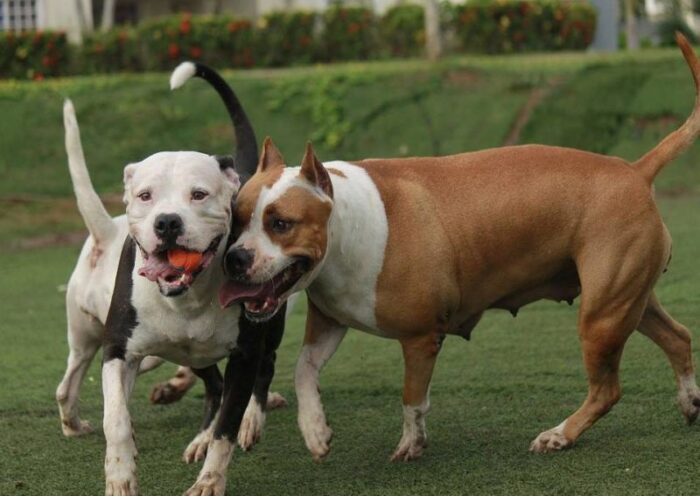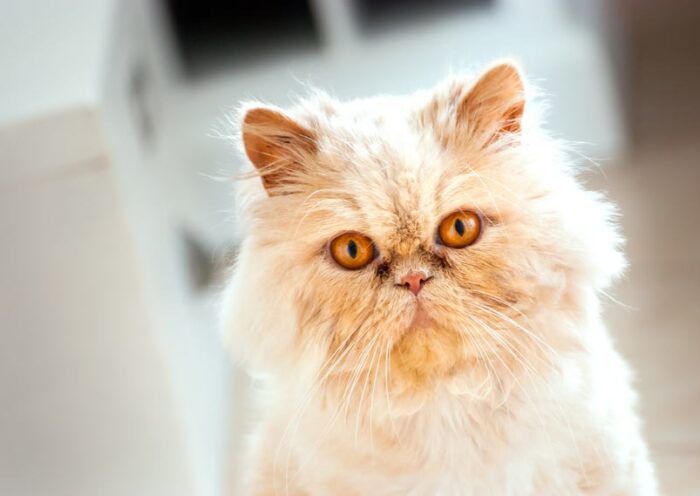
Cat Behavior and Body Language
From giant Maine Coons to tiny Toygers, all cats are naturally social creatures, despite their seemingly aloof natures. Domestic cats are much different from humans or dogs, and communicate using a complex system of body language, vocal sounds, and even scents.
This rich tapestry of signs and signals provides insights into their moods, intentions, and feelings.
By decoding these subtle cues, cat owners can create a deeper bond with their pets and understand them just a little bit better.
Tail Tales
The tail, often a primary indicator of mood, can provide a wealth of information. When held high, it generally signifies a confident and content cat, especially if it has a slight curve at the tip, akin to a friendly greeting. Conversely, a tail held low, particularly if tucked between the legs, can be a sign of fear or submission.
A twitching or flicking tail indicates a range of emotions, from irritation to playful anticipation. For instance, when a cat is focused intently on a toy (or potential prey), its tail may twitch with concentrated energy. However, a rapidly lashing tail can be a clear warning sign: the cat is agitated and might lash out if pushed further.
Eyes as Windows
The eyes, too, speak volumes. Dilated pupils can indicate excitement, fear, or even aggression. Conversely, slowly blinking eyes often represent a cat’s way of showing trust and affection, sometimes called “cat kisses”. If you slowly blink back at your cat, it’s a gentle way of reciprocating this sentiment.
The Sound of Feline Feelings
While meows are often directed at humans (adult cats rarely meow at each other), a variety of vocal signals exist in the feline world. The ‘chatter’, for instance, a teeth-chattering sound made when watching birds or squirrels, may relate to the cat’s hunting instincts. Some theories suggest this noise mirrors the death bite cats give to prey, while others believe it displays frustration or excitement at not being able to catch what they’re observing.
Purring, commonly believed to indicate contentment, can sometimes be a cry for help. Cats may also purr when in pain, stressed, or even when nearing death. The context is crucial when interpreting purrs.
Paw Play and Kneading
Kneading, a behaviour where cats push their paws in and out against a soft surface, often has its roots in kittenhood. Young kittens knead their mother’s belly to stimulate milk flow. Adult cats carry this behaviour into adulthood, associating it with the comfort and security they felt as kittens. Thus, when your cat kneads your lap, it’s a sign of trust and comfort.
However, extended claws during kneading might be a cat’s way of stretching their paws or keeping their claws sharp. Ensure your cat has appropriate scratching surfaces to help manage their claws.
Whisker Wisdom
Whiskers are incredibly sensitive and serve multiple purposes. They help cats navigate in the dark, judge spaces, and they can even detect changes in their surroundings. Positioned forward, they signify curiosity or excitement, while whiskers pulled back indicate fear or defensiveness.
Postures and Proximity
A cat lying on its back, exposing its belly, is showing significant trust. The belly is a vulnerable area. While it might be tempting to give belly rubs, be wary; some cats dislike the sensation and might grab or bite as a reaction.
Furthermore, a cat rubbing against your legs or furniture is not just seeking attention or affection. They have scent glands on their cheeks and the base of their tail, so this behaviour also marks territory, declaring it as their own.
Understanding Play and Aggression
Play is an integral part of a cat’s life, but it can sometimes be mistaken for aggression. Kittens play-fight to hone their hunting skills. However, if a cat feels threatened, its body will become stiff, ears will flatten, and it may hiss or growl.
To avoid miscommunication during play, it’s essential to use toys rather than hands. This ensures the cat doesn’t associate hands with prey, preventing inadvertent bites or scratches.
Conclusion
Cats communicate in diverse and subtle ways. By paying attention to these cues, from the flick of a tail to the direction of whiskers, cat owners can gain a richer understanding of their pet’s inner world. Fostering this understanding not only deepens the bond between cat and owner but also ensures a happier, stress-free environment for our feline friends.





